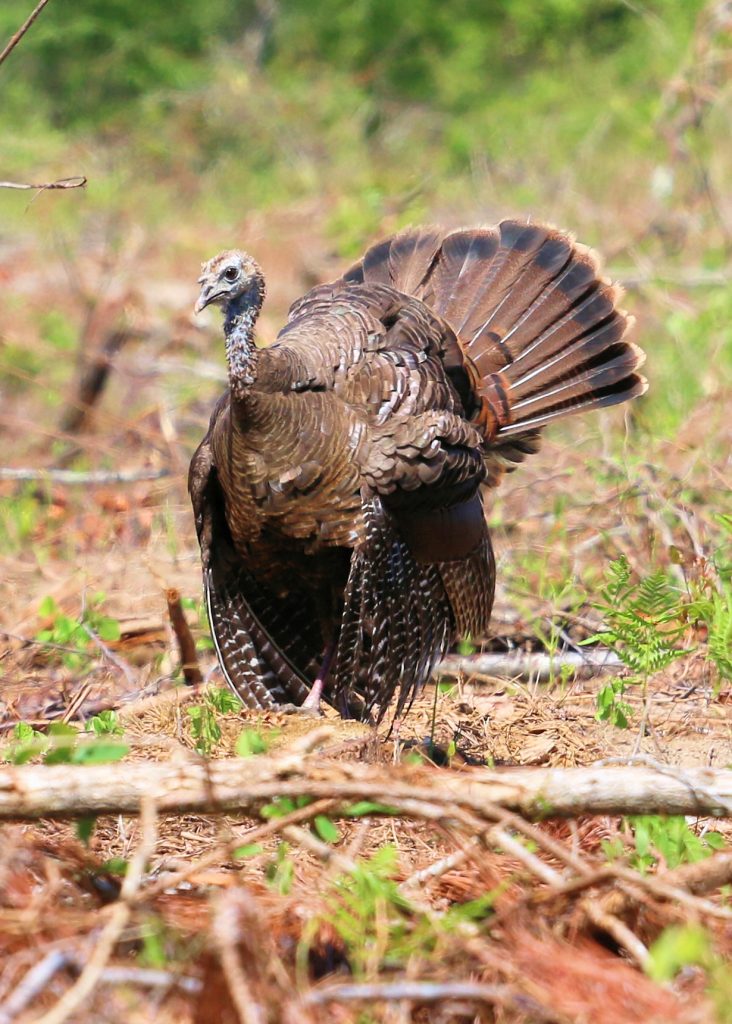Hen Fight
What would cause a group of hens to get aggressive, strut and challenge purr in the fall? Dr. Tom explains the behavioral science
Question:
While hunting in Osceola County, Florida, December 2021, a group of (what I am pretty sure were) hens very aggressively circled, harassed and attacked my Avian-X hen decoy, while some of them were strutting and fanned. I’ve hunted this same spot on private land for 15-plus years and have never seen any hens act like that before. If they were really hens, I’m curious about how unusual this would be, and thought maybe you’d have some insight. – Gene Beckham, via email
Answer:
Thank you for sending your question and the video of strutting hen turkeys you were able to film while hunting in Florida last fall. In the video there are at least three adult hens in full strut. The audio portion of the video allows one to hear the vocalizations. The hens were loudly purring, a vocalization referred to as challenge purring. I have heard challenge purrs when wild turkeys are aggressively approaching one another and while they are fighting. I have also observed this vocalization when birds are alarmed about something. In one situation a group of adult gobblers stood still on the forest edge issuing aggressive purrs while looking skyward. It took me a while to see what drew their attention – a soaring eagle at least a half-mile away.
Wild turkeys are social animals that communicate with vocalizations and postures. Postures (the way an individual holds its head, neck, wings and tail) are every bit as important in communicating its mood as the calls the bird is using. Video cameras, trail cameras and hunters spending hours in the woods have allowed us to get a closer look into the social interactions of wild turkeys. These up close and personal views into their behavior are fascinating.
Wild turkeys come equipped with innate behaviors. Among them are searching for food or otherwise interesting objects, scratching with their feet to expose potential food and feeding on their own shortly after hatching. These behaviors are typical of precocial birds. Precocial birds have young that leave the nest soon after hatching and find food on their own. Altricial birds remain in the nest and are fed by the adult birds. Some behaviors we associate with adult wild turkeys are present right from the get go. Researchers such as Dr. Bill Healy and Sam Nenno with the USDA Forest Service in West Virginia and Dr. Lovett E. Williams Jr. with the Florida Game and Freshwater Fish Commission studied human-imprinted wild turkey poults from hatching through adulthood. These biologists and other naturalists working with human-imprinted poults have observed day-old poults of both sexes strutting and displaying aggressive and submissive postures. Observing these important social behaviors in young wild turkeys suggests that the behaviors are instinctive.

We generally associate strutting with the courtship display of male wild turkeys. Certainly, we see strutting most often during the breeding season. It is designed to impress the hen with the gobbler’s potential. During the courtship display the male may gobble and the spit and drum can be heard. Those sounds differentiate the courtship display from other reasons turkeys strut. When fighting, the same display may be seen, but the vocalizations clearly communicate that this strut is a sign of aggression. One may hear sharp putts and challenge purrs when gobblers are competing against one another. The same type of interaction can occur among hens.
So, why would three or more adult wild turkey hens strut in the fall? Usually the challenge purring that can be heard in the video and the strutting display these hens are exhibiting is the result of a conflict to determine who should be the head honcho. In viewing one segment of the video, you can see a decoy where the action is taking place. It appears that the hen flock is reacting to the presence of the decoy that, in their perception, refused to yield to them. The adult hens were a team and as a group they began to challenge purr and strut to put the strange “interloper” in its place. They approached closely, bumped the decoy and even caused the decoy to spin around in their effort to make it submit to their flock hierarchy. When they determined they had won the skirmish, they moved off.
Many years ago, we used recorded poult calls to collect data on poult survival. A lost poult call would often result in a hen with a brood approaching our location so we could count the surviving poults. If the hen hesitated, we played a poult distress call, mimicking the sound of a poult in deep trouble. On one occasion there were three hens with about 18 poults. To get a better count, we played the distress tape. One of the hens immediately began to strut. That was the first time we observed the behavior, but I have seen many videos and still photos of strutting hens since then.
Send your questions to Dr. Tom by emailing turkeycall@nwtf.net
